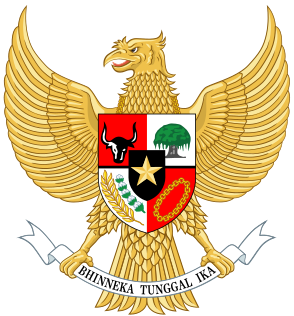 W
WThe Communist Party of Indonesia was a communist party in Indonesia during the mid-20th century. It was the largest non-ruling communist party in the world before its eradication in 1965 and ban the following year. The party had two million members in the 1955 elections, with 16 percent of the national vote and almost 30 percent of the vote in East Java. During most of the period immediately following independence until the eradication of the PKI in 1965, it was a legal party operating openly in the country.
 W
WBintang Merah was a magazine of the Communist Party of Indonesia which published in Jakarta from 1945 to 1948 and again from 1950 to 1965. It described itself as a magazine of Marxist-Leninist politics and theory.
 W
WHet Vrije Woord was a left-wing newspaper printed in the Dutch East Indies from 1915 to 1922, associated with the Indische Sociaal-Democratische Vereeniging and the Indonesian Communist Party in its early years.
 W
WFollowing the military take-over in Indonesia and the massacres of 1965–66, the Albanian capital Tirana became one of the main hubs for exiled members and sympathizers of the pro-Chinese wing of the Communist Party of Indonesia (PKI). According to prof. Justus van der Kroef there were about forty Indonesian communists staying in Tirana in the early 1970s, around half of them organized in the Persatuan Peladjar Indonesia. The Tirana-based group often acted as spokespersons of the party.
 W
WThe Indonesian mass killings of 1965–66 were large-scale killings and civil unrest that occurred in Indonesia over several months, targeting Communist Party of Indonesia (PKI) party members, Communist sympathisers, Gerwani women, ethnic Javanese Abangan, ethnic Chinese and alleged leftists, often at the instigation of the armed forces and government. It began as an anti-communist purge following a controversial attempted coup d'état by the 30 September Movement. The most widely published estimates were that 500,000 to more than one million people were killed, with some more recent estimates going as high as two to three million. The purge was a pivotal event in the transition to the "New Order" and the elimination of PKI as a political force, with impacts on the global Cold War. The upheavals led to the fall of President Sukarno and the commencement of Suharto's three-decade authoritarian presidency.
 W
WPeople's Democratic Front was a short-lived united front of leftists in Indonesia, founded in February 1948. FDR included the Communist Party of Indonesia, the Socialist Party, Labour Party of Indonesia, SOBSI and Pesindo. The leader of FDR was Amir Sjarifuddin.
 W
WPKI dan Perwakilan was a quarterly journal published from Djakarta by the Communist Party of Indonesia (PKI) 1956-1964. The publication was initially known as PKI dan DPR and was founded in June 1956. The name was changed to PKI dan Perwakilan after the local council elections of 1957. The magazine sought to provide information about the activities of the party inside parliament and local councils.
 W
WSinar Hindia was a left-wing Malay language newspaper from Semarang, Dutch East Indies, which published from 1900 to 1924. In its later years it was the mouthpiece of the left wing of the Sarekat Islam and its editors Mas Marco Kartodikromo and Semaun were instrumental in the rise of the Communist Party of Indonesia.